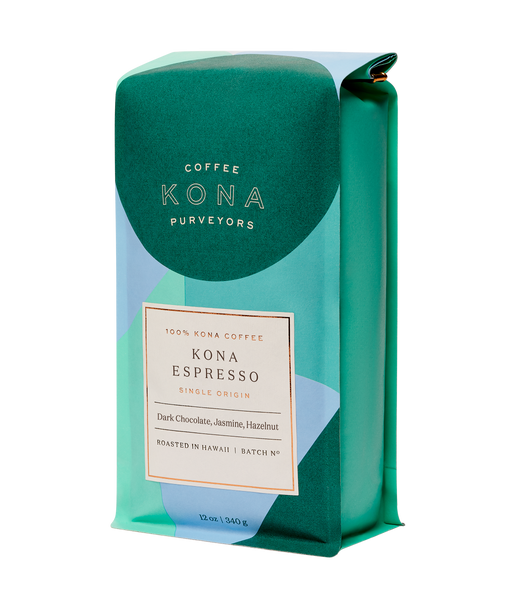Comprehending Coffee Beans: the Journey From Espresso to Blended Coffee Beans

The Origins of Coffee: An International Perspective
While you could believe of coffee as a modern-day staple, its origins trace back centuries, linking with societies across the globe. The tale begins in Ethiopia, where legend states a goat herdsman named Kaldi found the invigorating effects of coffee beans after observing his goats frolicking energetically after consuming them.
As trade routes increased, coffee made its way to Europe in the 17th century, promptly obtaining popularity. Each culture included its special spin to coffee prep work, enhancing its background.
Growing and Harvesting of Coffee Beans
As coffee's trip advanced, the emphasis moved to the farming and harvesting of specific bean selections, specifically those used for espresso. You'll discover that coffee beans frequently originate from Arabica or Robusta plants, each offering distinct flavors. The excellent growing conditions consist of high altitudes and abundant, well-drained dirt, which boost the beans' high quality.
During the harvest, picking methods differ. In some areas, employees hand-pick ripe cherries, making sure only the very best fruit goes to processing. In other areas, mechanical harvesters are utilized, particularly on bigger ranches. Timing is essential; you want to collect when the cherries reach peak ripeness for maximum flavor.
When gathered, the beans are gotten ready for processing, which is crucial in determining their final preference. Recognizing the cultivation and gathering processes gives you insight right into what goes right into your favorite coffee, improving your gratitude for each and every cup.
Processing Techniques: From Cherry to Bean
Since you've learnt more about gathering espresso beans, allow's explore just how those cherries transform into the coffee beans you love. You'll see exactly how different harvesting strategies effect flavor, adhered to by the necessary steps of fermentation and drying. Ultimately, we'll damage down the milling and grading process that establishes your coffee's quality.
Gathering Strategies Discussed
When it comes to coffee, recognizing harvesting techniques is necessary, since they straight influence the taste and top quality of the beans you appreciate. There are two primary techniques: discerning picking and strip picking. Careful choosing entails hand-picking just ripe cherries, guaranteeing you get the most effective high quality beans. This approach frequently results in a richer taste account, though it's even more labor-intensive. On the various other hand, strip picking means harvesting all cherries at when, no matter of perfection. While it's quicker and cheaper, this can result in a mix of flavors, impacting the last item. Ultimately, the selection of harvesting strategy can greatly affect your coffee experience, so it's worth recognizing exactly how those beans made it to your cup.
Fermentation and Drying Out
After gathering, the next action in handling coffee beans play a considerable function fit their taste. You'll discover that fermentation is important, as it helps break down the mucilage surrounding the beans, enhancing their preference account. Depending on the approach, this process can last from a couple of hours to several days, with varying results based upon temperature level and moisture.
When fermentation is complete, drying follows, which is just as important. You can select from sun-drying or mechanical drying approaches. Sun-drying allows the beans to absorb tastes from the environment, while mechanical drying warranties constant moisture levels regardless of weather. Correct drying out is necessary to protect against mold and maintain the beans' high quality, ultimately affecting your cup of coffee.
Milling and Grading Refine
As fermentation and drying established the stage for taste advancement, the milling and grading process warranties that only the best coffee beans make it to your mug. This stage entails getting rid of the external layers of the coffee cherry, including the parchment and husk. After milling, the beans are arranged by size and weight, making sure a consistent top quality. You'll find that grading aids identify problems and classify beans, which affects taste and aroma. High-quality beans get a greater quality, resulting in a richer coffee experience. When rated, the beans are ready for packaging and delivery, maintaining their distinct attributes. This meticulous process is essential for providing the exceptional taste you appreciate in every sip of your preferred brew.
Roasting Techniques: Unlocking Flavor Potential
When you roast coffee beans, the method you choose can drastically affect the flavor profile. Understanding the relationship between time, temperature level, and toasting strategies is vital to disclosing the capacity of your mixture. Let's explore how these elements come with each other to develop the ideal mug.
Roasting Approaches Explained
While you could assume that all coffee toasting approaches produce the same outcomes, the fact is that each method discloses one-of-a-kind flavor possibilities in the beans. Drum roasting utilizes a rotating drum to uniformly disperse heat, improving caramelization and generating a balanced flavor. Air roasting, on the various other hand, circulates warm air around the beans, advertising a lighter roast with noticable level of acidity.

Impact on Flavor Account
Various toasting techniques not just affect the procedure yet additionally greatly affect the taste account of the coffee beans. Dark roasts, on the other hand, bring out strong, great smoky tastes, in some cases covering up the bean's distinct attributes. Recognizing these nuances helps you value the artistry behind your cup of coffee, boosting your overall experience with every sip.
Time and Temperature Variables
To release the complete flavor possibility of coffee beans, both time and temperature throughout the toasting process play significant roles. When toasting, you'll locate that higher temperatures can quickly create tastes, however if you rush it, you look what i found might finish up with burned notes. Alternatively, reduced temperatures enable a much more progressive flavor growth, showcasing the beans' special attributes.

Timing is equally as essential; extending the roast as well long can lead to a loss of level of acidity and brightness, while too brief a roast may leave the beans underdeveloped. Finding that pleasant place needs technique and experimentation. By adjusting these variables, you can expose the rich, intricate flavors hidden within each bean, developing a genuinely amazing coffee experience.
The Art of Blending: Crafting Unique Coffee Accounts

Begin by choosing a base coffee that supplies a strong structure. An intense Ethiopian bean can bring fruitiness, while an abundant Brazilian coffee includes body.
As you mix, maintain in mind that each mix informs a tale. You're not simply making coffee; you're creating an experience. So, take your time, taste often, and appreciate the trip of uncovering your trademark mix.
Developing Approaches: Just How Preparation Impacts Taste
Blending coffee opens a domain name of taste opportunities, however just how you make that blend can significantly influence your last cup. Different developing approaches draw out distinct flavors and fragrances, so it's critical to pick sensibly. For example, a French press allows oils and debris to remain, developing a rich, full-bodied experience. On the various other hand, a pour-over highlights the coffee's clearness and brightness, perfect for showcasing fragile notes.
Espresso, with its high pressure, generates a concentrated shot that accentuates sweetness and crema. If you prefer a lighter mixture, take into consideration a cool why not try these out mixture approach; it generates a smooth, much less acidic taste.
Adjusting variables like water temperature, grind dimension, and make time can transform your coffee's account. Welcome the art of brewing to find the tastes hidden in your coffee blends.
The Future of Coffee: Sustainability and Technology
As the coffee industry progresses, sustainability and innovation are ending up being vital for addressing ecological obstacles and meeting customer demands. You'll see that more coffee firms are taking on environment-friendly practices, from sourcing beans ethically to carrying out lasting farming techniques. These shifts not just aid the world however also enhance the top quality of the coffee you delight in.
You could see technologies like naturally degradable packaging and water-saving brewing methods that minimize waste. Advanced modern technology, such as blockchain, is also ending up being preferred, ensuring transparency in the supply chain, which permits you to map your coffee back to its origins.
Additionally, spending in neighborhood neighborhoods and supporting farmers via reasonable trade campaigns fosters a much more lasting coffee environment. As you drink your next mug, keep in mind that your choices can add to a brighter future for coffee. By choosing lasting brands, you're not simply appreciating a drink; you're making a favorable influence on the globe.
Often Asked Concerns
What Is the Distinction Between Arabica and Robusta Beans?
Arabica beans are smoother, sweeter, and have a higher acidity, while robusta beans are stronger, more bitter, and contain more caffeine. When making your coffee., you'll discover these differences in flavor and aroma.
Exactly How Does Altitude Affect Coffee Bean Flavor?
Elevation impacts coffee bean taste substantially. Greater altitudes generate beans with brighter level of acidity and complex flavors, while lower altitudes typically generate beans that are larger and much less nuanced. You'll see these differences in your mug!
What Are the Health And Wellness Benefits of Drinking Coffee?
Drinking coffee can increase your energy, improve psychological emphasis, and also boost physical efficiency. It's rich in antioxidants, might decrease the risk of certain conditions, and can promote a much healthier metabolic process when consumed in small amounts.
Can Coffee Beans Be Recycled for Developing?
Yes, you can recycle coffee beans for brewing, but the flavor could be weak. If you delight in trying out, try recycling them in various methods, like cool brews or including in smoothies for an additional kick.
How Should I Store Coffee Beans for Quality?
To maintain your coffee beans fresh, store them in a closed container in a cool, dark location. Stay clear of revealing them to light, moisture, or heat, as these elements can swiftly weaken their flavor and aroma.
Recognizing Coffee Beans: the Trip From Espresso to Blended Coffee Beans.
Now that you've discovered about gathering coffee beans, allow's explore exactly how those cherries transform into the coffee beans you like.When you roast coffee beans, the approach you select can drastically impact the taste profile - Single Origin Espresso.While you could assume that all coffee toasting approaches generate the very same outcomes, the reality is that each method exposes special taste capacities in the beans.Different roasting methods not just affect the procedure however likewise considerably impact the flavor profile of the coffee beans